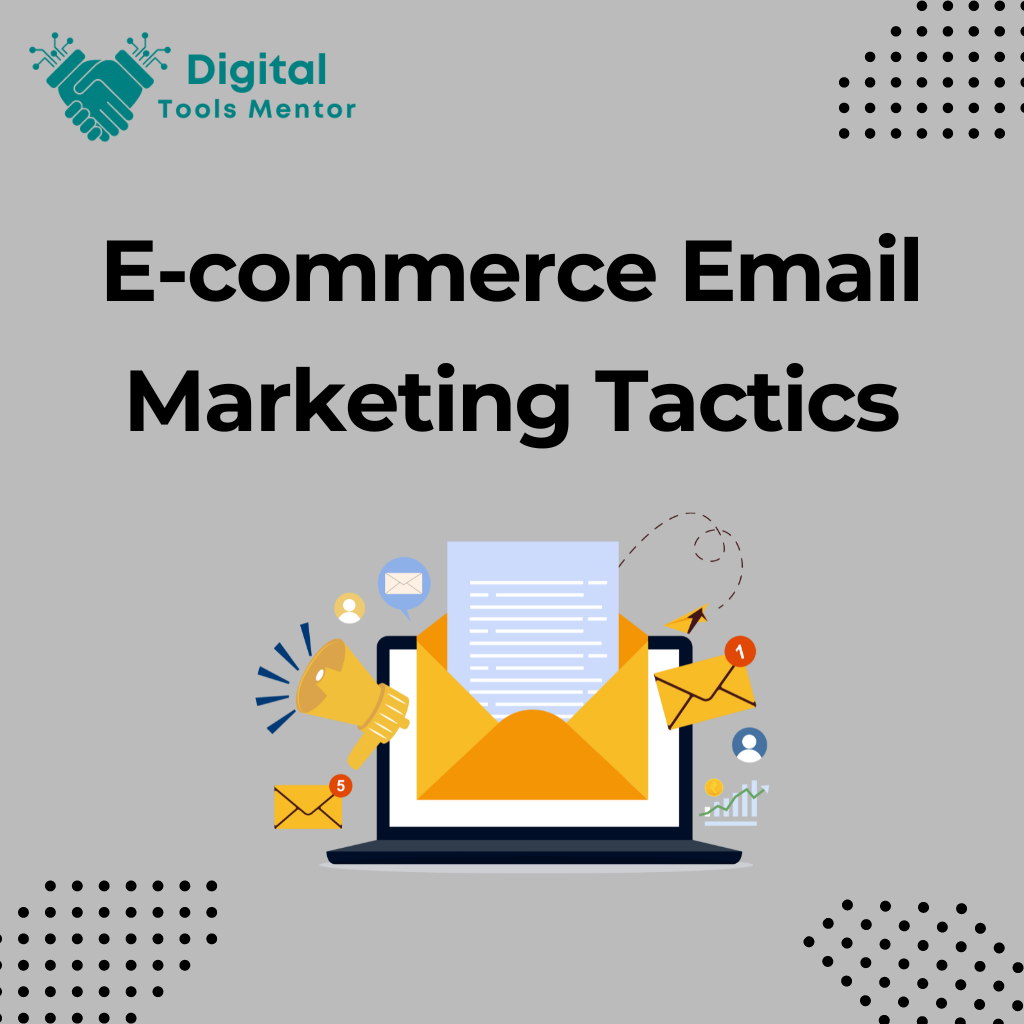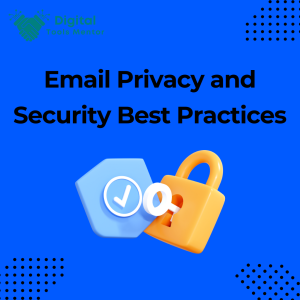Mastering E-commerce Email Marketing: Key Tactics for Success
Email marketing is a powerful digital communication strategy that involves sending emails to prospects and customers. Effective email marketing converts prospects into customers and turns one-time buyers into loyal, raving fans. In the realm of e-commerce, email marketing is not just a tool for communication; it’s an essential mechanism for driving sales and enhancing brand loyalty.
The significance of email marketing in e-commerce cannot be overstated. It offers an unmatched return on investment (ROI) among digital marketing channels because it provides a direct line of communication with your customers. Whether it’s promoting new products, offering discounts, or announcing a special event, email lets you deliver your message straight to the inbox of your target audience. This directness and precision make email marketing incredibly valuable for e-commerce businesses looking to boost conversions and nurture customer relationships.
However, utilizing email for online retail comes with its unique challenges and opportunities. One of the biggest challenges is standing out in your customers’ crowded inboxes. With countless businesses sending offers and updates, making your message noticeable and enticing requires creativity and strategic planning. On the other hand, the digital nature of e-commerce provides ample opportunities for gathering data and insights about customer preferences and behaviors. This data can be used to tailor emails and create highly personalized experiences that are more likely to engage and convert.
Moreover, the flexibility and scalability of email marketing make it ideal for e-commerce businesses of all sizes. From small startups to large enterprises, email marketing scales to meet the needs of any business without necessitating a significant increase in budget. Whether it’s through automated cart abandonment emails, personalized product recommendations, or seasonal promotions, email marketing allows e-commerce platforms to create a personalized shopping experience that enhances customer satisfaction and loyalty.
In conclusion, while email marketing in e-commerce comes with its set of challenges, the opportunities it presents are vast and varied. By effectively leveraging these opportunities, businesses can create compelling and successful marketing campaigns that drive significant business growth.
Explore 19 Best Email Marketing Software for Ecommerce
Building Your Email List
Building a robust email list is foundational to the success of any e-commerce email marketing strategy. An email list filled with engaged subscribers not only increases the potential for sales but also helps in building long-term relationships with your customers. Here’s how to effectively build your email list on an e-commerce platform:
Utilize Opt-in Forms
Opt-in forms are your primary tool for collecting email addresses. These should be strategically placed across your website where they’re most likely to catch your visitors’ attention without being intrusive. Common places include:
- Homepage: A pop-up or a static banner that is easily visible.
- Checkout pages: An option for customers to subscribe while making a purchase.
- Blog pages: Embedded forms that offer subscriptions for more content, updates, or exclusive offers.
The key is to make the sign-up process as simple as possible. Ask for essential information only, like an email address. Every additional piece of information requested can reduce the likelihood of someone completing the form.
Offer Lead Magnets
Lead magnets are incentives that you offer in exchange for an email address. They should provide significant value to your target audience, enticing them to subscribe. Effective lead magnets for an e-commerce platform might include:
- Discounts and Coupons: Offer a percentage off the first purchase or free shipping in exchange for an email sign-up.
- E-books and Guides: Provide detailed guides or e-books on topics related to your products. For example, a beauty store might offer a guide on skincare routines.
- Exclusive Access: Give early access to new products or sales events.
- Free Samples or Trials: Allow new subscribers to try a product for free or at a discounted rate.
Why Opt-In Forms and Lead Magnets Are Crucial
Opt-in forms and lead magnets are not just tools for list building; they are also your first step in establishing trust with potential customers. By offering something of value in exchange for an email, you start the relationship on a positive note, which can be crucial for future interactions. Moreover, these strategies ensure that the people on your list are genuinely interested in your products or services, which increases the likelihood of conversions.
Properly implemented, these strategies help create a strong, engaged email list that can drive significant returns for your e-commerce business. By focusing on thoughtful placement of opt-in forms and creating valuable lead magnets, you can effectively grow your subscriber base and set the stage for successful email marketing campaigns.
Segmenting Your Audience
Segmentation is the process of dividing an email list into smaller, more specific groups based on certain criteria. This strategy allows e-commerce businesses to send more targeted, relevant messages to different segments of their audience, which can lead to higher engagement rates, improved customer satisfaction, and increased sales.
Benefits of Segmentation
Segmentation offers several key benefits:
- Increased Relevance: Tailored messages resonate better with recipients because they address specific needs or interests, making them more relevant and engaging.
- Higher Conversion Rates: By targeting specific segments with messages that are particularly relevant to them, businesses can see higher open and click-through rates, and ultimately, higher conversion rates.
- Customer Retention: Personalized interactions foster a sense of understanding and care, which can increase customer loyalty and retention.
- Efficient Resource Use: Focusing marketing efforts on segments most likely to convert can lead to more efficient use of marketing resources.
Examples of Segmentation Criteria
Here are some common ways e-commerce businesses can segment their email lists:
- Purchase History:
- Frequent Buyers: Send exclusive deals and loyalty rewards.
- One-time Buyers: Engage with reactivation campaigns to encourage a second purchase.
- Cart Abandoners: Send reminders or offer discounts to encourage them to complete their purchase.
- Location:
- Geographical Area: Tailor content based on climate, local events, or regional preferences. For instance, promoting winter gear to customers in colder regions during the winter season.
- Time Zone: Send emails at optimal times depending on where customers live to increase the likelihood of emails being opened.
- Browsing Behavior:
- Product Interests: Segment users based on the products or categories they have shown interest in. For example, send targeted promotions for skincare products to users who frequently visit the skincare section.
- Engagement Level: Identify highly engaged users who frequently visit your site or spend a lot of time per session and target them with premium offers or early access to new products.
- Demographics:
- Age, Gender, Income: Customize messaging that resonates well with the specific demographic characteristics of each segment.
By using these segmentation criteria, e-commerce businesses can craft more personalized and effective email campaigns. This targeted approach not only enhances the customer experience but also significantly boosts the efficiency of marketing campaigns, ensuring that the right messages reach the right people at the right time.
Personalizing Email Content
Personalization in email marketing is the practice of tailoring messages to meet the needs and preferences of individual recipients. It goes beyond the basics of addressing a customer by their name; it’s about creating content that feels specifically designed for each person. This approach can significantly enhance the effectiveness of your e-commerce email campaigns by boosting open rates, enhancing engagement, and driving conversions.
Importance of Personalization
- Increased Engagement: Personalized emails capture attention because they resonate more with recipients. A message tailored to an individual’s interests and behaviors is more likely to be opened and acted upon.
- Enhanced Customer Experience: When emails reflect a customer’s preferences and previous interactions with your brand, it shows that you value and understand their unique needs, enhancing their overall experience.
- Higher Conversion Rates: Personalized emails have been shown to deliver six times higher transaction rates because they are more relevant to the recipient.
Practical Tips for Personalizing Emails
Here are several effective strategies to personalize your emails beyond simply using the customer’s name:
- Behavior-Based Triggers:
- Send emails based on specific actions a customer has taken. For example, if a customer has browsed a particular product several times but hasn’t made a purchase, you can send them a targeted email with a special offer for that product.
- Purchase History:
- Use data from past purchases to suggest similar products or accessories. This shows that you understand their preferences and can help simplify their shopping experience.
- Customized Recommendations:
- Employ algorithms to analyze browsing and purchase behaviors, enabling you to recommend products uniquely suited to each customer’s tastes.
- Birthday and Anniversary Emails:
- Celebrate special occasions with personalized messages and perhaps a special discount or gift. These emails often see higher engagement rates because they connect on a more personal level.
- Segment-Specific Content:
- Tailor email content to the characteristics of specific segments (e.g., location, age group, etc.). For example, sending weather-appropriate clothing suggestions based on the customer’s geographical location.
- Dynamic Content:
- Use dynamic content that changes based on the recipient’s data. For instance, show different images or offers in the email based on the customer’s past interactions with your website.
- Re-engagement Tactics:
- For customers who haven’t interacted with your emails or website in a while, send personalized emails reminding them of what they’re missing or offering a special incentive to return.
- Feedback and Surveys:
- Invite customers to provide feedback or participate in surveys. This not only shows that you value their opinion but also gives you more data to further personalize future communications.
By integrating these advanced personalization techniques, you can ensure that each email sent feels like it was crafted with the recipient in mind. This not only boosts the effectiveness of your email campaigns but also strengthens the relationship between your brand and your customers, paving the way for increased loyalty and ongoing engagement.
Creating Compelling Email Designs
Design plays a crucial role in the effectiveness of your e-commerce email campaigns. Well-designed emails not only capture attention but also make the content easier to digest and act upon. Given the prevalence of mobile usage, it’s particularly important to ensure that your emails look great on both desktop and mobile devices. Here are some key guidelines to help you create visually appealing and mobile-friendly email designs:
Focus on Mobile-First Design
- Responsive Layouts: Use email design templates that automatically adjust to fit the screen size of the device on which they are viewed. This ensures that your email looks good on any device, from a desktop monitor to a smartphone screen.
- Simplified Design: Keep the design simple with a clear hierarchy of information. On smaller screens, cluttered or complex designs can be difficult to navigate.
Utilize Images Effectively
- High-Quality Images: Use high-resolution images that are optimized for email. This means they should be clear but not so large that they significantly increase email load time.
- Relevant Visuals: Include images that are relevant to the content of the email. For example, if you’re promoting a product, include an attractive image of the product itself.
- Alt Text: Always provide alt text for images. If the images don’t load, the alt text will still communicate the message of the image to the viewer.
Choose Fonts Wisely
- Web-Safe Fonts: Stick to web-safe fonts that are widely supported across email clients and devices, such as Arial, Verdana, and Times New Roman. These fonts are more likely to display consistently.
- Readable Font Size: Use a font size that is easy to read on small screens. A minimum of 14px for body text and 22px for headlines is generally effective.
- Limited Font Varieties: Use a maximum of two different fonts in your email to keep the design cohesive and easy to read.
Color Schemes
- Brand Colors: Incorporate your brand’s color scheme into your emails to maintain consistency and reinforce brand recognition. However, make sure the colors look good on screen and are not too harsh on the eyes.
- Contrast for Readability: Ensure there is sufficient contrast between text and background colors to make the text easily readable. Poor contrast, such as light grey text on a white background, can make your email difficult to read, especially on mobile devices.
- Emotional Impact: Choose colors that evoke the desired emotion or action. For example, blue can evoke trust, while red can stimulate excitement or urgency, which might be useful for clearance sales or limited-time offers.
Layout and Composition
- Clear Call-to-Action (CTA): Your CTA should be prominent and easy to find. Use a button with a contrasting color to make it stand out, and ensure it’s large enough to be easily tapped on a mobile device.
- Whitespace: Utilize whitespace effectively to prevent your email from looking crowded. Adequate spacing between elements can significantly improve the readability and overall aesthetic of your email.
- Consistency: Maintain a consistent layout and style throughout your email campaign series to help subscribers quickly recognize your brand.
Creating compelling email designs is about more than just aesthetics. It’s about making sure your emails are accessible, engaging, and effective on any device, enhancing the user experience and driving better campaign results.

Optimizing Email Timing and Frequency
Timing and frequency are critical aspects of any email marketing strategy, especially in e-commerce. Sending emails at the right time and with the right frequency can significantly enhance open rates, click-through rates, and ultimately, conversions. Here’s how you can optimize these elements for your email campaigns.
Best Practices for Scheduling Emails
- Understand Your Audience’s Routine:
- Consider the typical daily routine of your audience. For instance, working professionals might be more likely to check their email early in the morning, during lunch breaks, or after work hours.
- Time Zone Considerations:
- If your audience is spread across different time zones, ensure that your emails are timed appropriately for each region. Tools that support time zone segmentation can automate this process.
- Avoid Overcrowded Times:
- Try to avoid sending emails during times when users are likely to be bombarded with messages, such as early Monday morning or late Friday evening. Mid-morning or mid-afternoon during the weekdays often yield better engagement.
Determining Optimal Frequency
- Start with Industry Benchmarks:
- Begin by looking at typical email frequencies within your industry and adjust based on your audience’s response. For retail, once a week might be a good starting point, while for high-engagement niches like hobbyist supplies, more frequent emails might be appropriate.
- Monitor Engagement Levels:
- Keep a close eye on how your audience interacts with your emails. If open rates and engagement decline over time, it might be a sign to reduce frequency. Conversely, if engagement remains steady, it could indicate that your audience is comfortable with the current frequency or could even engage more often.
- Allow Subscribers to Choose:
- Give subscribers control over how often they receive emails by setting up preferences in their subscription settings. This can help prevent subscriber fatigue and increase overall satisfaction with your email communications.
Using Analytics to Optimize Send Times
- Experiment with A/B Testing:
- Conduct A/B tests by sending the same email at different times or on different days to see which performs better. This will help you gather data on what times yield the highest open and conversion rates.
- Leverage Email Marketing Tools:
- Utilize the analytical tools provided by your email marketing platform. Many platforms offer insights into when subscribers open your emails, which can help you tailor your send times more effectively.
- Continuous Monitoring and Adjustment:
- Email marketing is not a ‘set and forget’ strategy. Regularly review the performance data to adjust the timing and frequency of your emails. This includes being aware of any changes in customer behavior or external factors like holidays and special events that might affect engagement.
Optimizing email timing and frequency is an ongoing process that relies heavily on understanding your audience and responding to their preferences and behaviors. By effectively using analytics and continuously testing and adjusting your approach, you can ensure that your e-commerce email marketing strategy achieves its maximum potential.
A/B Testing for Better Results
A/B testing, also known as split testing, is a method used to compare two versions of a single variable to determine which one performs better in a controlled environment. In the context of email marketing, A/B testing is an invaluable tool that allows marketers to make data-driven decisions that can significantly improve the effectiveness of their campaigns.
How A/B Testing Works
The process involves sending two variants (A and B) of one element of your email to a small percentage of your total recipients. Half receive version A, and the other half receive version B. The performance of each version is measured based on specific metrics such as open rates, click-through rates, or conversion rates. The version that performs better is then used for the rest of the audience.
Benefits of A/B Testing
- Enhanced Content Relevance: By testing different elements, you can discover what resonates best with your audience.
- Improved Engagement Rates: Optimizing email elements through A/B testing can lead to higher engagement and conversion rates.
- Reduced Risk of Failure: Testing allows you to identify poor-performing elements before they reach a large audience, minimizing potential damage.
Elements to Test in Email Campaigns
- Subject Lines:
- Clarity vs. Curiosity: Test a straightforward subject line against one that uses curiosity to provoke opens. For example, “20% Off Your Next Purchase” versus “Don’t Miss This Exclusive Surprise Offer.”
- Personalization: Include the recipient’s name in one version to see if it increases open rates compared to a generic greeting.
- Call-to-Actions (CTAs):
- Color and Design: Test different colors and shapes of CTA buttons to see which draws more clicks. For instance, a red button versus a blue button.
- Text: Experiment with different phrasings like “Buy Now” versus “Get Yours Today” to identify which is more compelling.
- Email Layouts:
- Single Column vs. Multi-Column: Determine which layout leads to better user engagement and content consumption.
- Image Placement: Test the impact of images at the top of the email versus images near the CTA to see which layout drives more conversions.
- Content Length:
- Short vs. Long: Some audiences prefer concise emails that get to the point quickly, while others respond better to more detailed content. Testing different lengths can help you tailor your approach.
- Personalization Level:
- Segmented vs. General: Send a highly personalized email to one group and a more generic email to another to see which approach yields better results.
- Offer Types:
- Discount Percentage vs. Dollar Amount Off: Test whether your audience prefers a percentage off their purchase (e.g., 20% off) or a fixed amount (e.g., $10 off a $50 purchase).
Implementing A/B Testing
When conducting A/B tests, it’s essential to:
- Only test one variable at a time to clearly understand what influences the outcome.
- Use a significant sample size to ensure that your results are statistically valid.
- Run the test for an adequate duration to account for variations in time-based performance.
A/B testing is a powerful technique that, when used correctly, can provide a deep understanding of your audience’s preferences and behaviors, leading to more effective email campaigns. By continuously learning from these tests, you can refine your email marketing strategy to better meet the needs of your subscribers, ultimately boosting your e-commerce success.
Automating Email Campaigns
Email automation involves using software to send out emails automatically based on specific triggers and schedules. This strategy enables businesses to maintain consistent communication with their customers without requiring manual effort for each email sent. Automation is particularly beneficial in e-commerce, where timely and personalized communication can significantly impact customer retention and sales.
Benefits of Email Automation
- Efficiency: Automates the process of sending emails, saving time and reducing the workload on marketing teams.
- Consistency: Ensures that communications are sent at optimal times, maintaining regular contact with customers.
- Personalization: Allows emails to be triggered by specific customer actions, such as visiting a particular product page, which enhances relevance and engagement.
- Scalability: Supports the ability to handle large volumes of emails and customers, growing as the business does.
Types of Automated Emails
- Welcome Emails:
- These are sent immediately after a customer subscribes to your list or registers on your site. Welcome emails set the tone for the relationship and typically have high open rates. They are an opportunity to introduce your brand, offer a first-purchase discount, or simply thank the customer for their interest.
- Cart Abandonment Emails:
- Sent to customers who add items to their online shopping cart but leave the site without completing the purchase. These emails can remind the customer of what they left behind and encourage them to return to complete their transaction. Including a special offer or a reminder of limited stock can increase the effectiveness of these emails.
- Re-engagement Emails:
- Targeted at customers who have not interacted with your brand for a specified period. These emails aim to rekindle interest and bring customers back to your website. They might include special offers, updates on new products, or a simple message asking for feedback on why they haven’t returned.
- Order Confirmation and Shipping Update Emails:
- These provide customers with details about their orders and shipping status. Order confirmations reassure customers that their transaction was successful, while shipping updates keep them informed about the status of their purchase, enhancing overall customer satisfaction.
- Birthday or Anniversary Emails:
- Scheduled to go out on the customer’s birthday or the anniversary of their first purchase. These emails often include a personal touch and can offer special promotions or discounts as a gift, fostering loyalty and encouraging sales.
- Upsell and Cross-Sell Emails:
- Sent based on previous purchases to suggest related products or upgrades. For example, if a customer bought a camera, an automated email might suggest buying a lens or a tripod as a complementary product.
- Feedback and Review Request Emails:
- Automated to request customer feedback or a review after a purchase. These emails are crucial for gathering customer insights and enhancing product offerings.
Implementing Email Automation
Setting up email automation requires understanding your customers’ journey and identifying key touchpoints where automated emails could be beneficial. Utilize email marketing platforms that support automation, and craft your automated emails to feel as personalized and human as possible. Monitoring the performance of these emails regularly and adjusting based on customer feedback and behaviors is also crucial to maintain engagement and effectiveness.
By automating these essential communications, e-commerce businesses can ensure they engage customers effectively throughout their buying journey, enhancing the chances of conversion and fostering long-term loyalty.
Analyzing and Measuring Success
In email marketing, especially for e-commerce, the success of your campaigns hinges on continuous monitoring and analysis of key performance metrics. Understanding these metrics not only helps you gauge the effectiveness of your current efforts but also guides you in optimizing future campaigns. Here’s how to track and leverage these crucial data points.
Key Metrics to Track
- Open Rates:
- This metric measures the percentage of recipients who opened an email. It’s a primary indicator of how well your subject line performs and whether your emails are reaching the right time.
- Click-Through Rates (CTR):
- The click-through rate tells you the percentage of email recipients who clicked on one or more links contained in your email. It reflects how engaging and compelling your email content and call-to-actions (CTAs) are.
- Conversion Rates:
- Conversion rate is a critical metric that measures the percentage of email recipients who clicked on a link within the email and completed a desired action, such as making a purchase. This metric is directly tied to the ROI of your email marketing efforts.
- Bounce Rates:
- Bounce rate refers to the percentage of your total emails sent that could not be successfully delivered to the recipient’s inbox. Tracking bounce rates helps identify and clean up your email list, ensuring better deliverability.
- Unsubscribe Rates:
- This is the rate at which people are opting out of your email list after receiving an email. While some attrition is normal, a high unsubscribe rate can indicate issues with your email content or frequency.
Using Data to Refine Email Campaigns
- Optimize Send Times and Frequency:
- If open rates are lower than expected, experiment with different sending times or days of the week. Use analytics to determine when your audience is most likely to open emails.
- Improve Content and Personalization:
- Analyze which types of content yield higher CTRs. Use this insight to tailor future emails, focusing more on the content that resonates best with your audience. If personalization increases engagement, consider ways to segment your audience further to deliver more personalized experiences.
- Enhance Subject Lines:
- If your open rates are suffering, revise your subject lines. Testing different styles, such as including offers, personalization, or curiosity-driven texts, can help identify what captures your audience’s attention.
- A/B Testing:
- Regularly use A/B testing for different elements like subject lines, email layouts, and CTAs. This testing can provide concrete data on what improvements can be made and what elements are performing well.
- Monitor Conversion Paths:
- Track the journey of a customer from an email link click to conversion. Understanding this path can help you identify where customers are dropping off and what barriers they might be encountering.
- Feedback Collection:
- Don’t shy away from directly asking your subscribers for feedback on your emails. Incorporate surveys or feedback forms to understand subscriber satisfaction and areas for improvement.
By diligently tracking these metrics and applying insights from the data, you can continuously refine your email campaigns, making them more effective in engaging customers and driving sales. Remember, the goal is not just to send emails but to send the right emails—those that add value to your recipients and align with their interests and needs.
Advanced Tactics and Trends in E-commerce Email Marketing
As e-commerce continues to evolve, so too does email marketing. Advanced tactics like predictive analytics and dynamic content are becoming integral parts of sophisticated email strategies. Additionally, keeping an eye on emerging trends helps businesses stay ahead and remain competitive in a crowded market. Here’s an overview of these advanced tactics and a look at the trends shaping the future of e-commerce email marketing.
Advanced Tactics
- Predictive Analytics:
- Predictive analytics uses historical data and machine learning algorithms to forecast future behavior. In email marketing, this can mean predicting the best times to send emails, which products a customer is likely to purchase next, or even forecasting potential churn rates. Implementing predictive analytics can significantly enhance the personalization of your campaigns, leading to higher engagement and conversion rates.
- Dynamic Content:
- Dynamic content refers to email elements that change based on the behavior, preferences, or past interactions of the subscriber. This can range from showing different products to different segments, personalizing images and offers based on the user’s location, or updating content in real-time to display the most relevant offers. Dynamic content makes emails feel highly personalized and relevant, increasing the likelihood of engagement.
Upcoming Trends
- Integration of AI and Automation:
- The use of AI in email marketing is set to grow, particularly in automating content creation, optimizing send times, and personalizing interactions at scale. AI can analyze vast amounts of data to provide insights that humans might miss, making email campaigns more effective and efficient.
- Privacy-First Personalization:
- With increasing scrutiny on data privacy, including regulations like GDPR, marketers need to balance personalization with privacy. This involves transparent data practices and leveraging data in ways that respect user privacy while still providing personalized experiences.
- Interactive Emails:
- Incorporating elements like quizzes, polls, or interactive sliders directly into emails can increase engagement rates. This type of content not only entertains but also encourages subscribers to interact more deeply with the brand, providing valuable feedback and behavioral data.
- User-Generated Content:
- Featuring reviews, photos, or testimonials from other customers within emails can build trust and encourage community. As consumers continue to value authenticity, incorporating user-generated content can enhance credibility and relatability.
- Voice and Visual Search Optimization:
- As more consumers use voice assistants and visual search in their shopping, emails that cater to these technologies will stand out. For instance, optimizing email content to be easily searchable via voice queries or including visual search cues could become important strategies.
Preparing for Future Trends
To prepare for these trends, businesses should focus on building flexible and adaptable email marketing platforms that can integrate new technologies. Training teams in data analytics and AI applications in marketing will also be crucial. Moreover, maintaining a keen understanding of privacy laws and ensuring compliance will be key in building trust and sustaining long-term relationships with customers.
By adopting advanced tactics and staying ahead of these trends, businesses can not only improve their current email marketing performance but also position themselves as forward-thinking leaders in the e-commerce landscape.
Conclusion
Email marketing remains a cornerstone of e-commerce success, providing a direct, cost-effective, and highly personal way to communicate with customers. By carefully crafting emails that are visually appealing, timely, and relevant, businesses can enhance customer engagement, boost conversions, and build lasting relationships. The integration of advanced tactics like predictive analytics and dynamic content further enriches the potential of email campaigns, making them not only more personalized but also more responsive to the evolving needs of customers.
As the digital landscape continues to evolve, staying updated with the latest trends and technologies in email marketing is crucial. By implementing these strategies step-by-step, you can gradually refine your approach, ensuring your email campaigns remain both effective and innovative. Start small, measure your results, and continuously optimize to turn your email marketing efforts into a significant growth driver for your e-commerce business.
FAQ’s About E-commerce Email Marketing
- What is e-commerce email marketing?
- E-commerce email marketing is the practice of sending emails to promote products, inform customers, and drive sales in an online retail setting.
- Why is email marketing important for e-commerce?
- It provides a direct, personalized way to communicate with customers, offering high ROI through targeted promotions and customer engagement.
- What are some effective types of e-commerce email campaigns?
- Welcome emails, cart abandonment emails, order confirmation emails, and personalized product recommendations are highly effective.
- How do I build an email list for my e-commerce store?
- Use opt-in forms on your website, offer lead magnets, and ensure a simple signup process during checkout.
- What is the best time to send e-commerce emails?
- It varies, but generally mid-morning or mid-afternoon on weekdays can be effective. Use analytics to determine optimal times for your specific audience.
- How can predictive analytics improve email marketing?
- By analyzing customer data to predict behaviors and preferences, allowing for more targeted and timely email campaigns.
- What is dynamic content in email marketing?
- Content that changes based on the user’s behavior, preferences, or interaction history, making emails more personalized and relevant.
- How often should I send marketing emails to my customers?
- It depends on your audience and industry, but regularly without overwhelming your customers. Use engagement metrics to fine-tune frequency.
- What metrics should I track to measure email marketing success?
- Key metrics include open rates, click-through rates, conversion rates, bounce rates, and unsubscribe rates.
- How do I ensure my emails are mobile-friendly?
- Use responsive email design templates, keep your layout simple, and test your emails on multiple devices and email clients.




